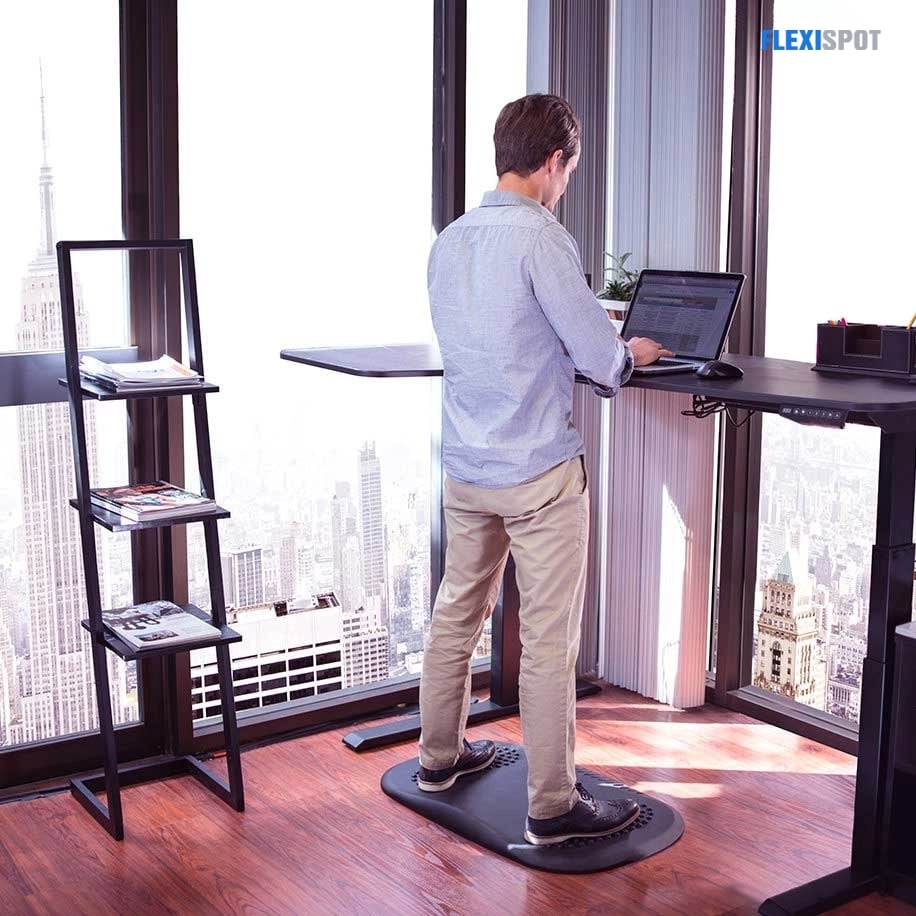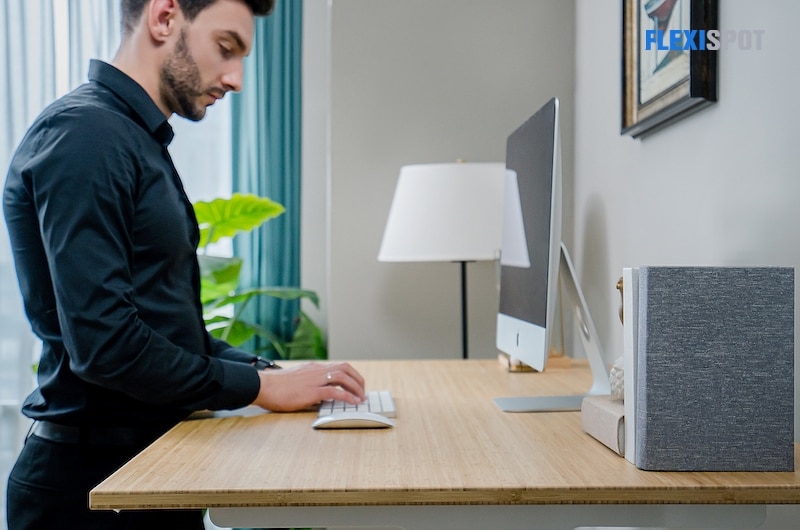Have you invested in a standing desk? It is fantastic that you have considered investing in your health! The majority of people want to know what the best standing desk posture is.
Check out flexispot.com if you do not already have one or if you are looking to replace your existing one. An excellent suggestion is the Adjustable Standing Desk Pro Series.
When you sit or stand at a standing desk, you will undoubtedly move your body. Expect stiff muscles to relax, a fatigued back to rest, and more due to movement. If you have an electric standing desk, you may effortlessly alter your posture as often as you wish.
With medical research verifying the benefits of a standing desk, the only thing left to ensure is that you are utilizing it properly. To consider, the Department of Labor in the United States has provided some suitable standing desk posture suggestions.
Creating an Ergonomic Workspace
Here are some guidelines to ensure that the ergonomic desk setup is complete, whether you set it up yourself or delivered it as an assembled item. Are you familiar with the seven best practices for creating an ergonomic standing workstation?
The Best Standing Desk Positions
The majority of people are unsure about the ideal standing desk position. Please keep in mind that these are only suggestions. You will be able to tell what is best for you and your body. Make the necessary adjustments. The most advanced ergonomic standing desk posture is what this article will talk about in the succeeding paragraphs.
1. Standing Posture
To have a proper standing desk posture, make sure you are standing straight and comfortable. This posture provides enough comfort for your spine's natural S-shape. Slouching and bending may not be the most comfortable positions to hold for an extended period. These may aggravate your joints over time as a result of repetitive motions.
2. The Feet and the Equilibrium of the Body
Your feet receive the brunt of the load when you balance your body on your feet. To relieve foot tension, consider shifting weight from one foot to the other. The usage of a footrest when transferring weight may be beneficial.
You should avoid wearing heels since they put a lot of strain on your feet.
3. Knees
Stay away from the knee lock position. Locking your knees while standing erect puts strain on your knees, back of thighs, and calf muscles.
4. Relaxation Periods
Take a break every few minutes during the day to relieve tense muscles. To save time and be more efficient, incorporate this into your work routine, such as retrieving a document or meeting with coworkers. Do not forget to study a few desks posture exercises to ensure a proper standing desk posture.
5. Sitting Down
When using a sit-stand desk, you may find that you need to sit once you have had enough standing.
For your comfort, make sure you have an ergonomic chair. You can even adjust the office chair's lumbar support.
Do not lean forward in your chair. Sit as far back as possible, using the seatback's support, which can help relieve the stress of the day's job. It is not your back.
To establish good standing desk posture, place your feet flat on the ground. The knees should form a ninety-degree angle with your thighs parallel to the floor. If you are running out of breath, utilize a footrest instead of letting your legs hang in the air.
Accessories in the Best Position
1. Height of the Desk
What is the ideal desk height for a good standing posture? There is no reference to a specific number. Make sure your elbows are at a ninety-degree angle when you place your laptop.
The horizontal surface of the desk provides a spot for your forearm to rest as you prepare to begin your day.
When you avoid leaning forward and resting your weight on the edge of the desk's surface, you know you have adjusted the desk at the proper height.
2. Monitor Display
It is better if you align the computer screen with your vision. You do not have to stoop or strain your neck by looking up. You may avoid computer glare by keeping the screen about 20 inches away from your face and working to keep your vision intact.
3. Use a Keyboard
Keep the keyboard in front of you at all times. Make sure the keyboard's centerline corresponds to yours. As you use the keyboard with both hands, this ensures an even balance. It lowers the amount of stretch in any one hand.
Make sure your forearms are resting comfortably on the desk surface. Hanging your elbows will bear the brunt of the load as you work. While typing, keep your elbows at a comfortable ninety-degree angle.
The most crucial thing is that your wrists are supported by a soft cushion and are not at an angle as you type. You will not feel any stress in your hands if you keep them comfortable.
4. The Mouse
The first step is to make sure you have a comfortable external mouse that fits comfortably in your palm. Some people prefer trackball, but it can be taxing on the hands.
The external mouse and keyboard should be on the same level.
The mouse provides a secure grip for your wrist. For added comfort, some people like to utilize a wrist support pad.
Keep the mouse near to the keyboard to avoid straining your arms. On the other hand, a comfortable open elbow position may be helpful.
To avoid straining your arms, keep the mouse close to the keyboard. A comfortable open elbow position, on the other hand, maybe beneficial.
5. Phone
Place it close enough that you can reach it with one hand. This prevents your shoulders or arms from overstretching, minimizing the risk of a muscle injury.
The phone is frequently held between the neck and the head of many people. This could induce a sprain by affecting your neck muscles. Instead, for your convenience, use a headset.
6. Various Other Accessories
Keep them close to your primary work location to avoid overstretching your body as you reach for other smart office equipment.
If you need to get something out of your arm's reach, make sure you step up to get it. It would be best if you did not stretch since you might pull a muscle.
Take a look at the luxurious selection of tech desk accessories available for your standing desk.
In conclusion, simply purchasing an ergonomic sit-stand desk will not help you unless you maintain proper posture during work. You are on your path to good health with suitable and appropriate standing desk postures!



